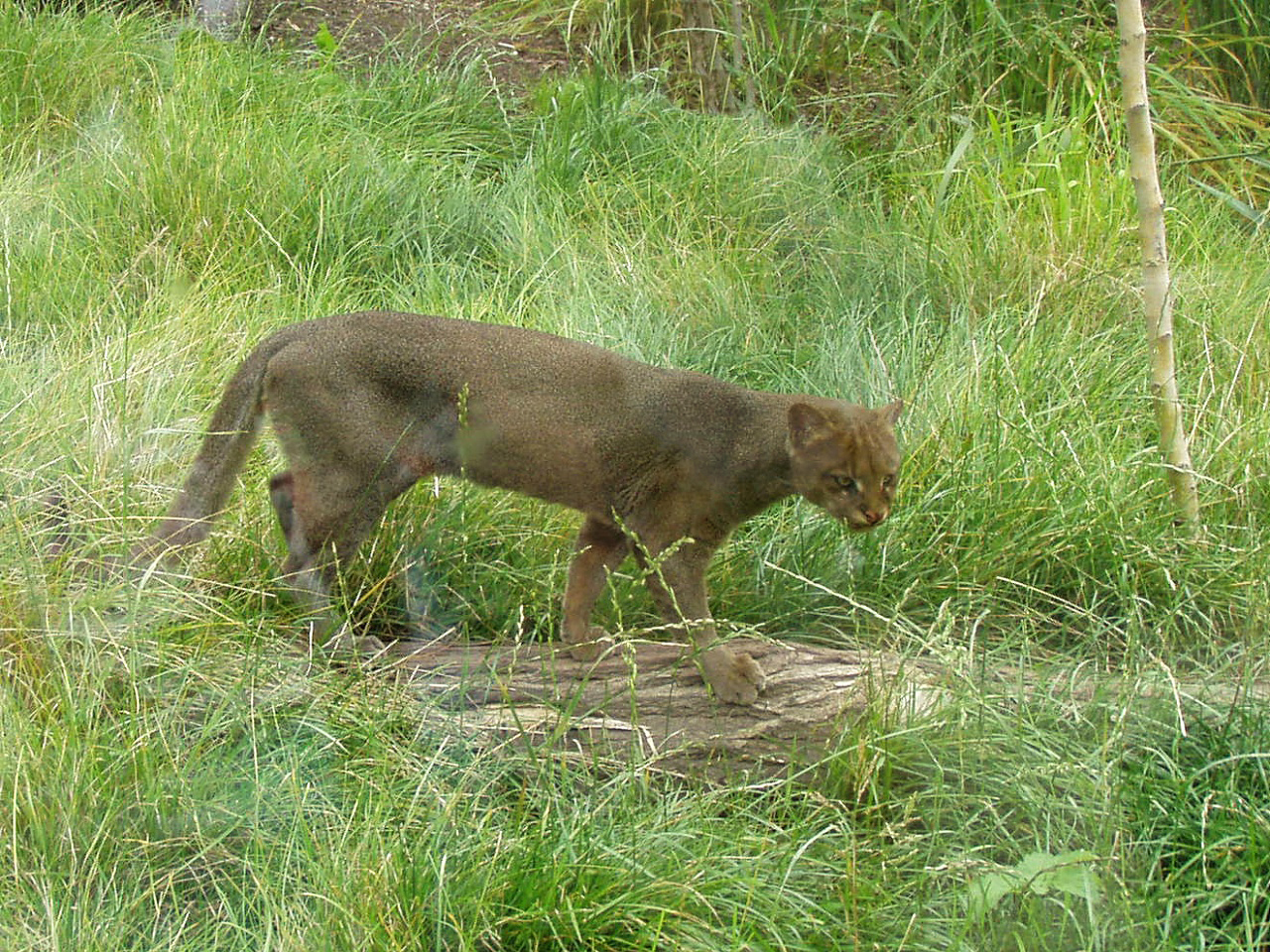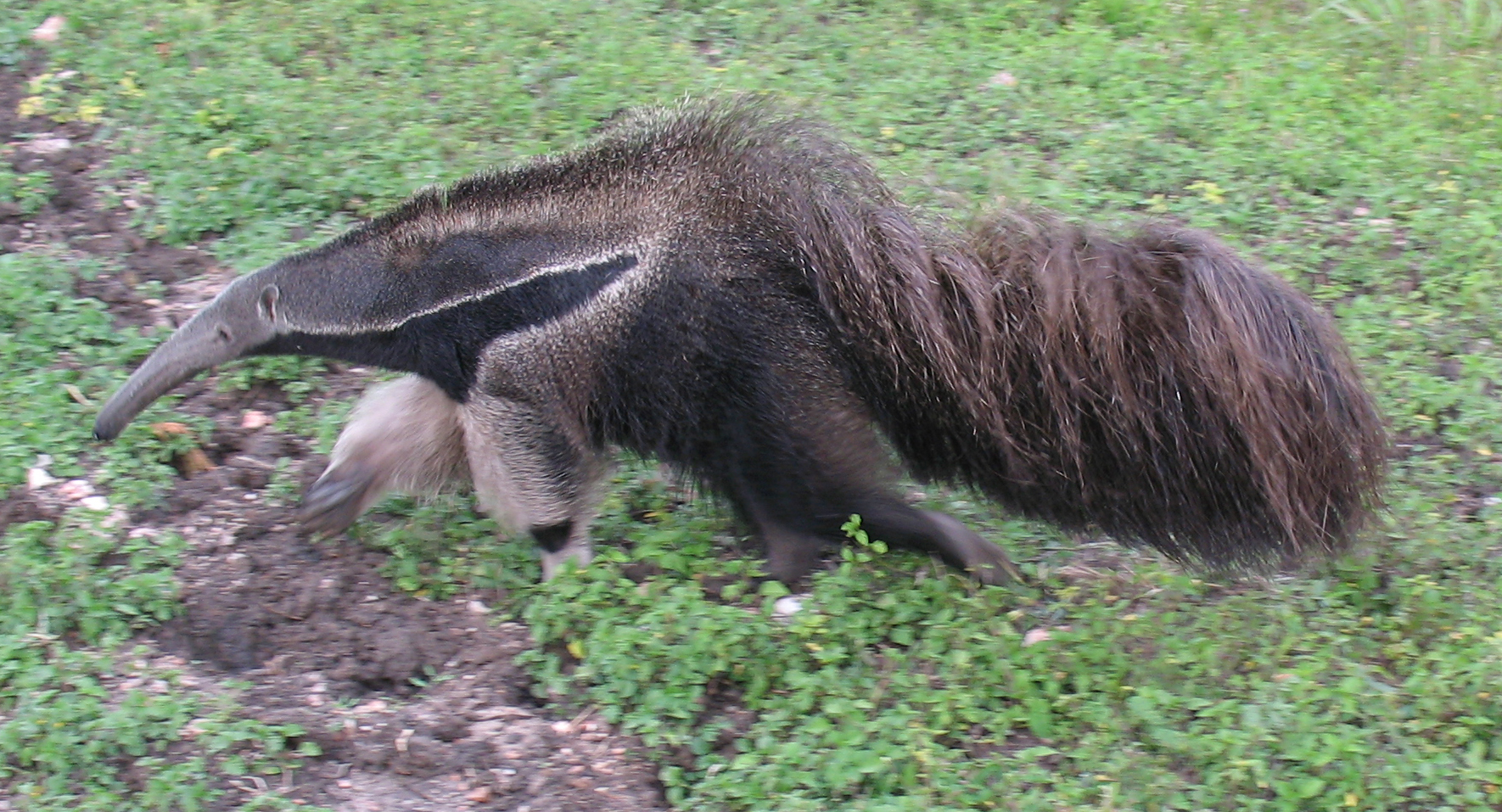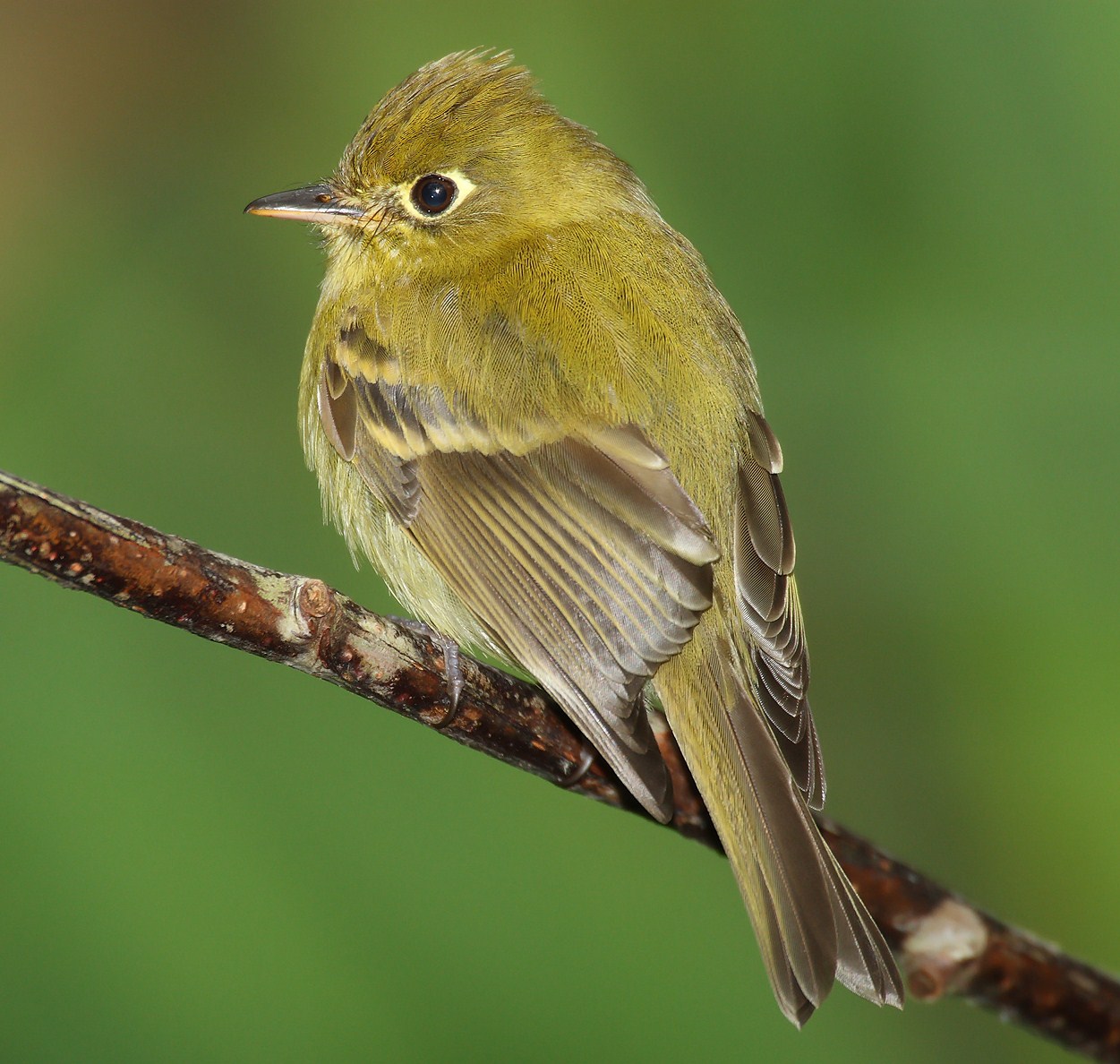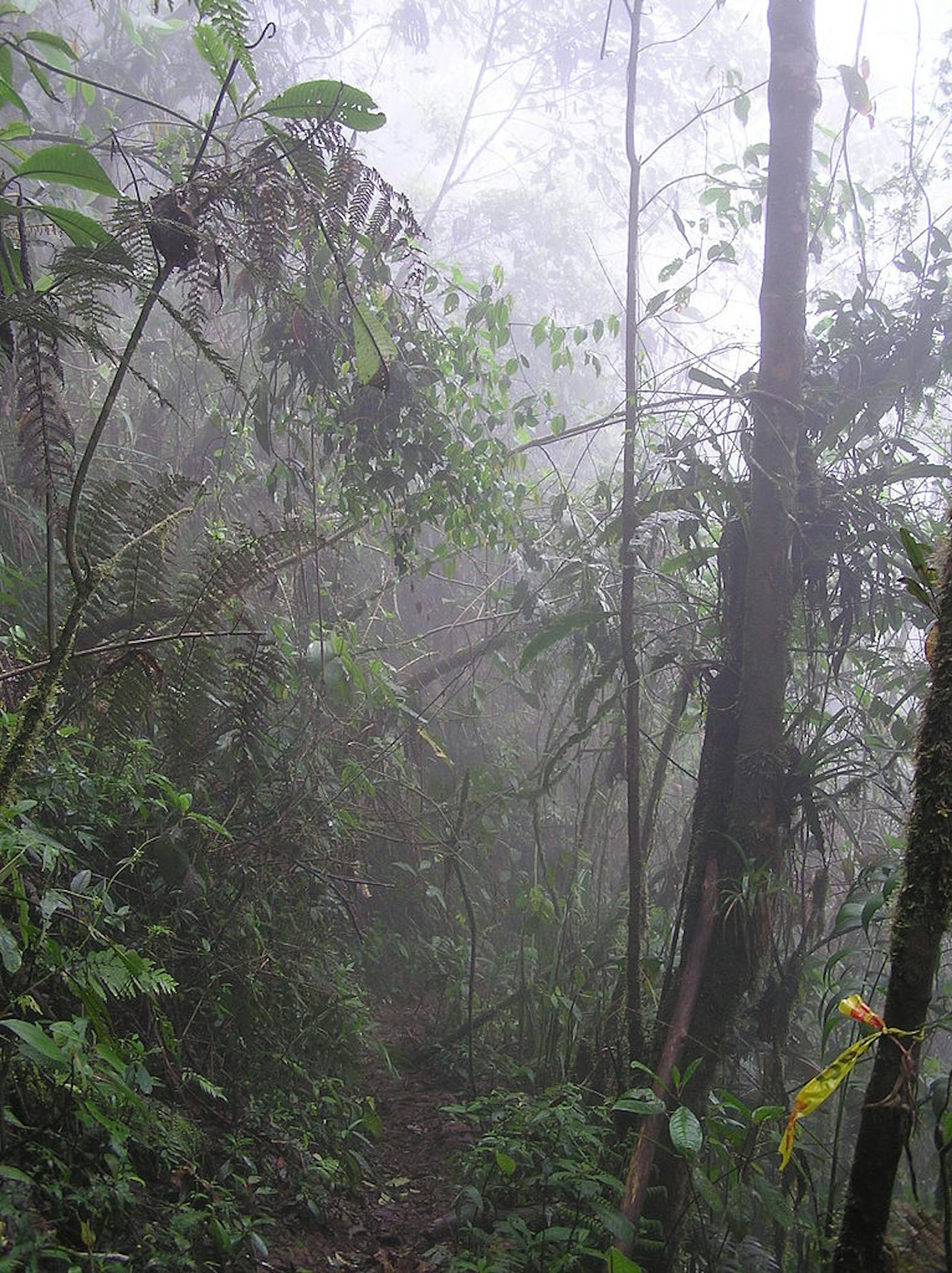Chocó-Darién Moist Forests
The ecoregion’s land area is provided in units of 1,000 hectares. The protection goal is the Global Safety Net (GSN1) area for the given ecoregion. The protection level indicates the percentage of the GSN goal that is currently protected on a scale of 0-10.
Bioregion: Central American Isthmian & Colombian Coastal Forests (NT24)
Realm: Central America
Ecoregion Size (1000 ha):
7,379
Ecoregion ID:
454
Conservation Target:
93%
Protection Level:
1
States: Colombia, Panama
The Critically Endangered brown headed spider monkey’s range includes two known locations in the Chocó region. They are one of the most arboreally adapted primates and require large expanses of primary forest to thrive. When they do have to cross over land they are very susceptible to predation as they have a hard time “walking”. Instead they are expert brachiators (like gibbons) and cartwheel hand over foot through the tops of the high canopy.
.jpg)
The flagship species of the Chocó-Darién Moist Forests ecoregion is the brown headed spider monkey. Image credit: Courtesy of Suriki, Creative Commons
Because of their preference for the emergent and upper canopy, the spider monkeys are very important seed dispersers as they have access to fresh fruits before they fall to the forest floor. They will often eat fruits while moving between trees and discard the seeds on the way, giving it a chance to sprout in a new location.
The ecoregion of the wet forests of Chocó-Darién extends from eastern Panama, in the provinces of Darién and Kuna-Yala, along almost the entire Pacific Coast of Colombia, in the departments of Chocó, Cauca, Valle del Cauca, and Nariño.
There are five distinct subregions:
- the northern coast, with the hill country areas of Darién and Urabá;
- the coastal zone along the Pacific coast, generally up to an elevation of 500 m;
- the central strip, including the northern wet forests, the central rainforests and the San Juan River area;
- the hills of Carmen del Atrato and the San José del Palmar area;
- the jungles along the Pacific slope from 500–1,000 m in altitude.
The average annual temperature is generally 23.6°C and annual precipitation ranges from 4,000–9,000 mm. Characteristic vegetation in the northern areas of the ecoregion include the bongo, wild cashew, rubber, and kapok trees. In flooded areas the cativo tree dominates. In southern areas it is common for multiple vegetation layers including lianas (vines rooted in the soil) and epiphytes (plants that grow on others) to be attached to the trees.

Puma. Image credit: Creative Commons
Chocó-Darién is one of the most active centers of endemism and speciation in the world. Its flora is estimated to include 8,000-10,000 vascular plants with 20% of them strictly endemic. Local endemism is characteristic of the region, indicating that many species have very restricted ranges of distribution and giving rise to an extraordinary β (beta)-diversity, i.e. diversity related to high variation in species composition between the aforementioned five subregions. 127 amphibian, 97 reptile, and 577 species of bird have been recorded.
The ecoregion connects two endemic bird areas in Central American and South America respectively. 60 restricted range bird species harness the area, including viridian dacnis, crested ant tanager, the vulnerable Chocó tinamou and plumbeous forest falcon, and the endangered Baudó oropendola. Mammals are common throughout the region, notably including Geoffrey’s tamarin, tapir, puma, ocelot, jaguar, and the vulnerable giant anteater.

Giant anteater. Image credit: Creative Commons
As of 1995, sections of the northern and southern parts of the ecoregion have been replaced by banana and palm oil plantations respectively. The central portion remains largely intact with minimal fragmentation and high connectivity. Compared to the amount of remaining natural landscape, protected areas in the region are lacking in size. The Chocó-Darién’s extensive areas of lowland forests and medium elevations represent one of the last opportunities to conserve relatively large areas of intact forest in the northwestern region of South America. The most notable protected area in Panama is Darien National Park, representing about 10% of the ecoregion and bordered on the east in Colombia by Los Katios National Park. Colombia has several small protected areas within the ecoregion, but the largest contain only about 1% in size and are not well connected.

Yellow flycatcher. Image credit: Creative Commons
The major threat to this ecoregion is deforestation for timber, agriculture and extraction. The forests of Chocó, despite representing only one-sixth of Colombian forests, supply more than half of the wood in the country. Other sources of degradation include a naval base at Málaga Bay, palm and banana plantations, gold mining, and illegal growing of cocoa.
The priority conservation actions for the next decade will be to: 1) conduct basic research as much of the ecoregion is unexplored and unknown to science; 2) enforce restrictions on timber harvesting to reduce cutting old growth forests; and 3) increase the number and connectivity of protected areas in the core of the ecoregion.
Citations
1. D’ambrosio, U. 2019. Northern South America: Western Colombia into southeastern Panama. https://www.worldwildlife.org/ecoregions/nt0115 Accessed January 14, 2019.
2. Dinerstein, E., D. M. Olson, D. L. Graham, A. L. Webster, S. A. Primm, M. P. Bookbinder, and G. Ledec. 1995. A conservation assessment of the terrestrial ecoregions of Latin America and the Caribbean. DC.: WWF and The World Bank.
3. Budowski, G. 1990. Desarrollo sostenible: el caso de la Provincia Fitogeográfica del Chocó. In INDERENA, ECOBIOS, Colombia 88. El desarrollo sostenible: estrategias, políticas y acciones. Septiembre 20-23, 1988. Memorias del Simposio Internacional, Bogotá, Colombia. Ministerio de Agricultura, INDRENA, Bogotá.
4. Cuarón, A.D., Shedden, A., Rodríguez-Luna, E., de Grammont, P.C. & Link, A. 2008. Ateles fusciceps. The IUCN Red List of Threatened Species 2008: e.T135446A4129010. http://dx.doi.org/10.2305/IUCN.UK.2008.RLTS.T135446A4129010.en Accessed January 14, 2019.



